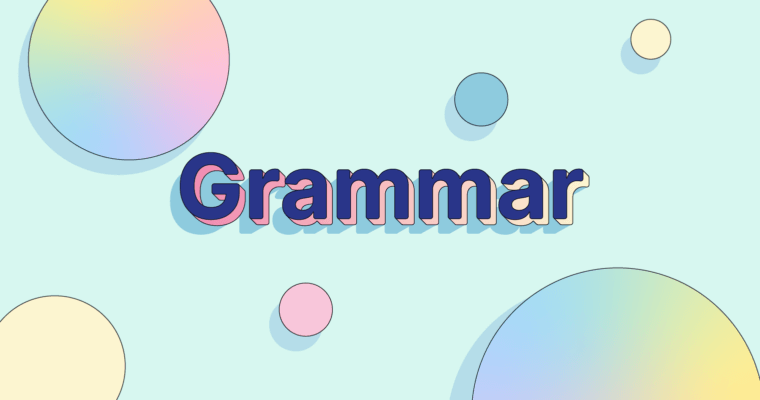
There are a few “rules” of grammar that aren’t actually rules or, at any rate, rules that people like grammarians and linguists can agree on. These scenarios show that the standards and norms around language can be inconsistent and often confusing.
One classic example of these non-rule rules is the common advice that infinitives shouldn’t be split—meaning no words should come between the to preceding an infinitive verb and the verb itself. In fact, it’s now widely acknowledged that there’s nothing grammatically incorrect about a split infinitive. Let’s not be afraid to boldly go where many have been told not to go before.
What is a split infinitive?
An infinitive is the root form of a verb, which is the way it appears without any of the changes that it can make to show properties (such as voice, mood, tense, person, and number). It’s also the form of a verb that can appear after the word to: to be, to have.
When we refer to an infinitive as being “split,” we mean that an adverb or adverb phrase is placed between the to and the principal verb in a sentence, as in these examples:
She seems to often be up and about early in the morning.
Wen decided to gradually decrease the amount of time they spent on their phone every day.
Is it OK to use split infinitives?
The short answer to the question of whether it’s OK to use split infinitives is yes. Most usage experts today agree that there is no grammatical objection to the split infinitive and that there are quite a few circumstances in which splitting an infinitive can be preferable to leaving it intact.
Reasons to split an infinitive
Meaning
It’s generally preferable to place an adverb as close as possible to the verb it is modifying, and sometimes misplacing it can really change the meaning of a sentence. Compare the following two examples—the first has the infinitive split by the adverb always, and the second is rewritten in a way that doesn’t split the infinitive:
I was taught to always clean up after myself.
I was taught always to clean up after myself.
In the second sentence, the infinitive to clean up is not split. However, the placement of always after the verb phrase was taught makes the meaning ambiguous—the sentence could be read as saying that the teaching always happened rather than that the lesson was to always clean up.
There are certain constructions whose meanings are absolutely reliant on an infinitive being split. Consider this sentence:
The company had intended to more than double its output that quarter.
It couldn’t be rewritten as “The company had intended more than to double its output” or as “The company had intended to double more than its output”—neither of those versions makes any sense.
Natural rhythm and emphasis
Sometimes, even when a sentence could be rewritten to avoid splitting an infinitive without its meaning being obscured, the result sounds awkward, unnatural, or like the emphasis is in the wrong place. In those cases, it generally makes sense to split the infinitive rather than sacrifice the gracefulness of your language. Here are some examples of sentences that would lose some naturalness or emphasis without their split infinitives. Try to reorganize them with the infinitive unsplit and see if you agree.
I want to really emphasize the importance of the workshop tomorrow.
Paz likes to gradually come to consciousness in the morning rather than being abruptly woken up.
We choose to not mow the lawn in order to attract pollinators.
When not to split an infinitive
Because so many readers, educators, and others still object to split infinitives and find them annoying, it may make sense to avoid them in cases where you don’t have to sacrifice any clarity or elegance to do so. Here are some examples of sentences that can be painlessly rewritten to avoid the split infinitive, with examples of how to do that:
Split: The women proceeded to briefly describe what they’d seen in the city.
Not split: The women proceeded to describe what they’d seen in the city.
Split: I’d love to completely go over the text with you tomorrow.
Not split: I’d love to go over the text with you completely tomorrow.
Just keep in mind that you don’t have to spoil a natural rhythm or muddy your meaning just to appease the anti-splitters.
Examples of split infinitives from pop culture and literature
These are the voyages of the Starship Enterprise. Its five-year mission: to explore strange new worlds, to seek out new life and new civilizations, to boldly go where no man has gone before. —Star Trek
For me I’m sworn to never trust a man— / At least with letters. —Elizabeth Barrett Browning, Aurora Leigh
But still, the policy of the army at that time was not to send—was specifically to not send—women into combat roles —NPR
Nor can I blame thee, though it be my lot / To strongly, wrongly, vainly love thee still. —Lord Byron, “Love and Death”
I knocked gently and rang as quietly as possible, for I feared to disturb Lucy or her mother, and hoped to only bring a servant to the door. —Bram Stoker, Dracula
Split infinitive FAQs
What is an infinitive?
An infinitive is the most basic form of a verb, which is the way it appears without any of the changes that it can make to show properties. It’s also the form of a verb that can appear after the word to.
What is a split infinitive?
A split infinitive is an infinitive that has an adverb or adverb phrase appearing between the to and the principal verb.
Is the use of split infinitives grammatically incorrect?
Though many people have been taught that using a split infinitive is grammatically incorrect, that idea has little basis in historical usage guides, and most usage experts today agree that there is no grammatical objection to the practice. Often, splitting an infinitive is clearer or more graceful than not splitting it.






